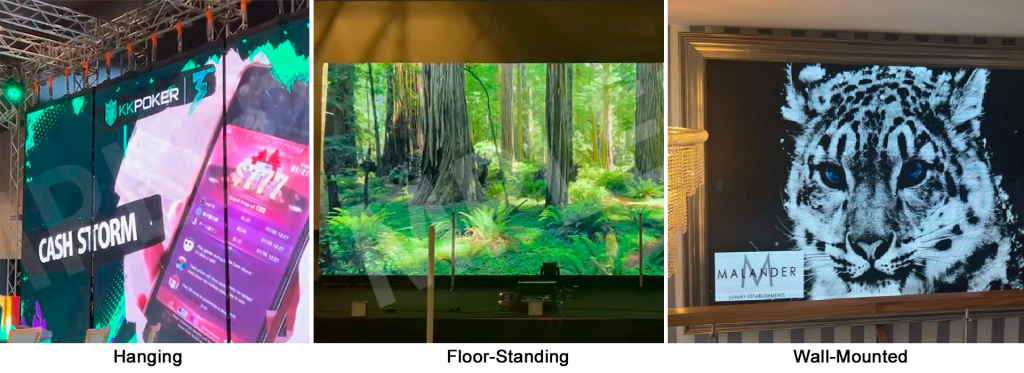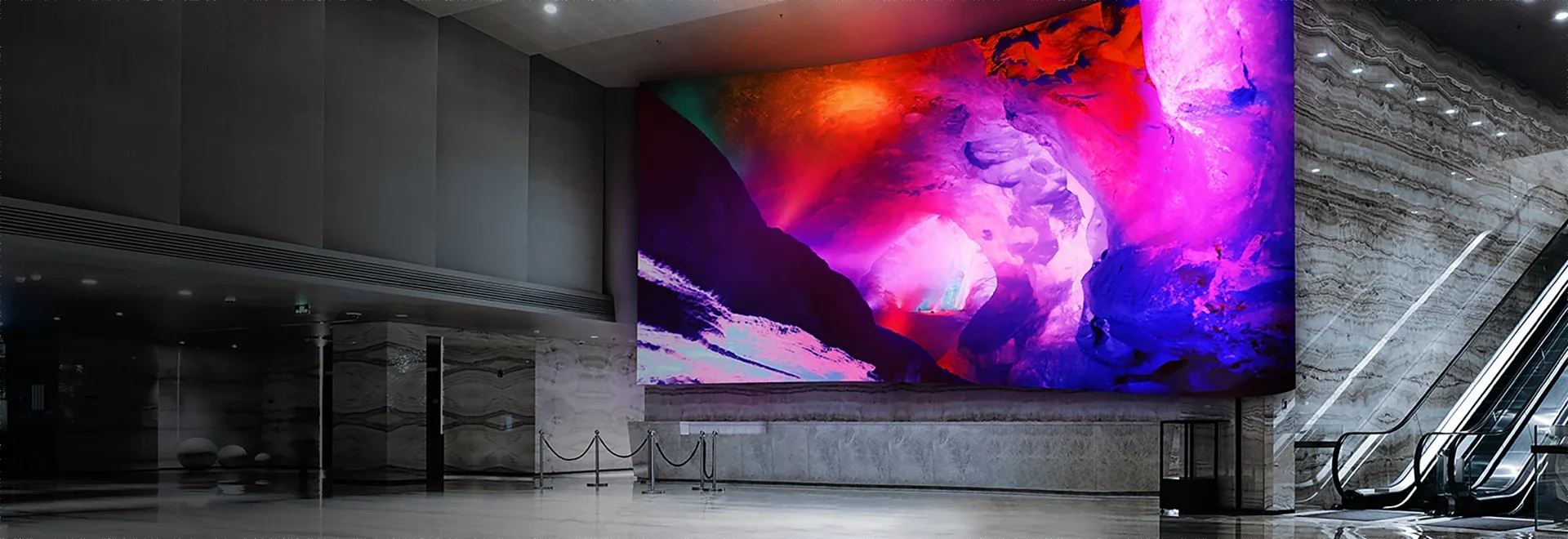How to Choose Indoor LED Displays?
In the world of indoor LED displays, choosing the right one revolves around three key factors: Using Occasion, type of installation, and control method. These elements collectively contribute to seamlessly integrating technology in various indoor environments.
1. Where will your display be installed?
Indoor LED displays find homes in various environments such as conference rooms, fitness centers, exhibition halls, marketing spaces, and transportation hubs. The choice of installation method is a key determinant in optimizing the impact of LED displays:
Hanging Displays:Perfect for crafting attention-grabbing visuals in places such as market stores, employing suspended structures to enhance advertising impact.
Floor-Standing Displays:Ideal for spacious areas or specific settings, Floor-Standing Displays are a smart choice. Whether using poster LED screens for store info during seasonal discounts or opting for a larger impact with LED cabinets on floor-standing structures, these options offer effective and versatile visual solutions.
Wall-Mounted Displays:Mounting your screen on the wall creates a clean and space-saving environment, enhancing the overall aesthetic appeal.

For freestanding and wall-mounted installations, it’s crucial to consider the maintenance space required. Planning for at least 50cm of clearance ensures accessibility for maintenance tasks. In cases where space is limited, opting for front-maintenance displays becomes a practical choice.
2. What Type of Indoor Splicing Display System?
The nature of your event or project determines whether a rental or fixed installation LED display system is more suitable:
Rental LED Displays:Optimal for scenarios requiring frequent assembly and disassembly, catering to events like indoor commercial promotions or stage displays.
Fixed Installation LED Displays:Ideal for permanent installations, delivering stability and reliability for applications like market indoor screens used for advertising.
3. Which Control Method Suits Your Needs?
Control methods for LED displays fall into two categories: synchronous and asynchronous. The choice depends on the frequency of content updates and the need for synchronization with a PC:
Asynchronous Control:Enables remote control through cloud platforms, accessible via various devices such as PCs, smartphones, or tablets. Ideal for scenarios where content changes infrequently, like market advertising screens.
Synchronous Control:In scenarios like temporary events, such as rental LED screens, utilizing a PC for control ensures reliable functionality, especially when employing video processors for enhanced features.
In conclusion, selecting indoor LED displays involves a meticulous consideration of installation positions, splicing display systems, and control methods. By aligning these choices with the unique needs of diverse indoor environments, businesses and event organizers can seamlessly integrate LED technology, creating captivating visual experiences that resonate with audiences.

